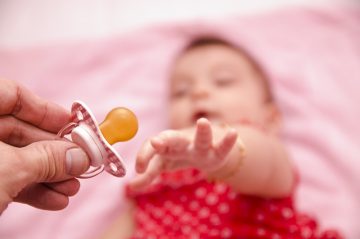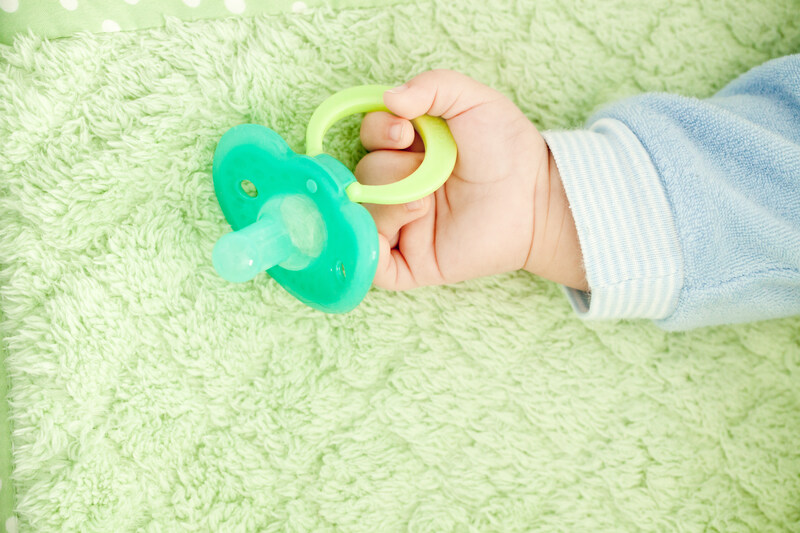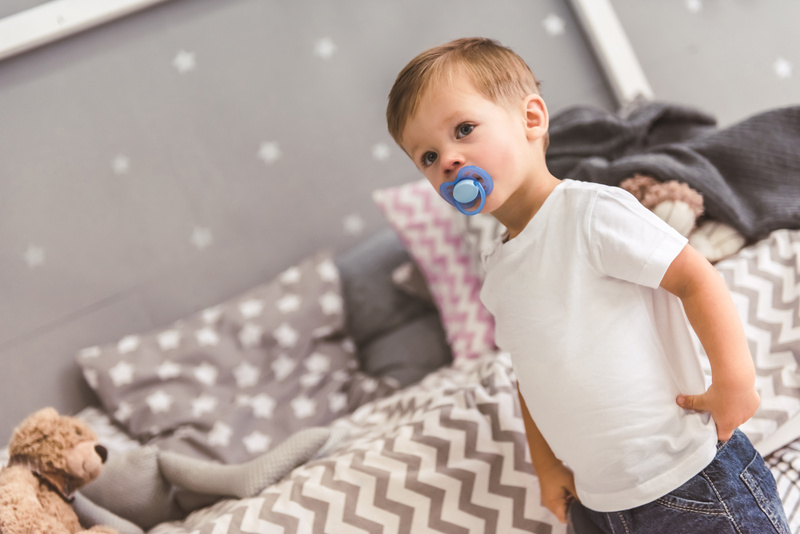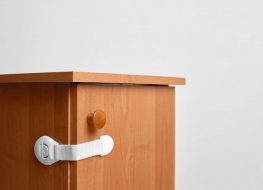
Pacifiers are lifesavers. They are every parent’s go-to when their babies are stressed or need hushing. Babies love pacifiers, and they find it soothing to suck on something as they play, sleep, or do different activities. Pacifiers are many babies’ safety blankets.
However, as a parent, you might have heard that using pacifiers can cause orthodontic problems in babies. So, is it true? And can the best pacifier for teeth prevent this problem? If so, which pacifiers should babies be using? Or should they use one at all? We’ll answer these here, together with the many frequently asked pacifier questions. So keep reading!
-
Can the Best Pacifiers for Teeth Prevent Orthodontic Problems?
The best pacifier for teeth development prevents orthodontic problems and many more baby discomforts. When you become a parent, these are the two different pacifiers you can choose from, and they can both be beneficial for your little one.
Dental-Friendly Orthodontic Pacifiers
Orthodontic pacifiers have a flatter shape following the structure of a baby’s mouth when they are milk-feeding. There are no significant adjustments in the roof of the mouth, tongue, and, later on, teeth, so orthodontic problems can be kept at bay.
Traditional Pacifiers To Avoid Nipple Confusion
The difference between an orthodontic pacifier and a traditional pacifier is that these soothers have a rounded tip to mimic a real nipple. They designed it this way, so younger babies won’t find it difficult to adjust from breastfeeding to using a pacifier. When babies get confused between using a pacifier and breastfeeding, they cast aside one when both are beneficial for them. Just take note that a traditional pacifier’s shape may affect teeth development, especially when they are used by older babies.
-
Is Using a Pacifier Good for Babies?
Yes, pacifiers are beneficial for babies because of several reasons. To begin with, babies feel more relaxed because of the sucking motion they do when using pacifiers. If you notice, babies often doze off when they are breast or bottle feeding, and it is because of the relaxation they get not only from having a full stomach but also from sucking. When their pacifiers are on, they can have sound sleep.
Aside from being sleep inducers, some babies continue to use their pacifiers as they do different activities, like watching their favorite cartoons or playing. These babies do it as they have developed a liking for the relaxed feeling when sucking. They play better and shy away from tantrums because of pacifiers.
-
Can Newborns Sleep With a Pacifier?
Yes, babies can sleep with a pacifier on. Pacifiers prolong the sucking motion babies do when they breastfeed, so the relaxed state they have while feeding is also sustained. When babies are at ease as they sleep, they can sleep soundly and better.
Another reason that will encourage you to offer pacifiers to babies when they sleep is that it lowers the risk of Sudden Infant Death Syndrome (SIDS). SIDS is among the most common causes of death in babies. It is also known as “crib death” as babies six months or younger can be affected by it as they sleep.
Although the causes of SIDS (and treatments) are not pinpointed yet, theories suggest that an insufficient supply of oxygen and babies sleeping on their tummies may cause it. When babies have a pacifier, they can control their breathing better and are less likely to roll on their tummies.

-
At What Age Do Babies Need Pacifiers?
You can offer pacifiers to babies as soon as they get accustomed to breastfeeding or bottle feeding. This may be a few weeks after babies are born. This ensures they won’t trade breastfeeding and bottle feeding with pacifiers. When pacifiers are introduced too early, babies may think that it is the only means for them to suck and soothe, giving problems to parents like you during feeding time.
Then, they can use them even during their toddler years. However, most of the time, babies outgrow their pacifiers as soon as they take in solids. Some develop using pacifiers as a safety blanket that they use during their toddler years. However, take note that prolonged use isn’t good either, which we’ll detail in the next section.
-
At What Age Are Pacifiers Bad?
Pacifiers are unsuitable for children four years old and up as they may hinder the proper development of their teeth. Some dental experts even encourage weaning between 6–12 months. This is because prolonged pacifier use can cause some dental issues in children like open bites, buck teeth, crossbites, and roof mishaps.
Eating incorrectly may also be an issue, as misaligned teeth affect proper biting and chewing. Poorly developed teeth can also cause them to lose their self-confidence, especially when they are at the age of going to school. On top of this, they can also develop speech difficulties with their teeth not being in proper alignment.
-
How Can I Wean My Child From Pacifiers?
So, if pacifiers are bad by age four, how can you wean them from something that has served as their comfort blanket for the past years? Here are the ways!
- If the child is old enough to understand, explain why they must stop using pacifiers. Let them know they’ll have better smiles when they stop using it.
- Provide something to replace the pacifier, especially if they treat it as their safety blanket. Offer something they can carry around, like a stuffed toy or a little traveler’s backpack.
- Make your baby feel safe as much as possible, as feeling stressed is one of the causes of why they continue using pacifiers.
- Agree with your toddler to limit pacifier use during bedtime until they slowly and totally wean.
Prepare yourself; weaning a baby from a pacifier isn’t easy. Have loads of patience and put yourself in your baby’s shoes. It isn’t easy for them to let go of something that has kept them feeling safe and relaxed for a long time.

-
Should I Wash Pacifiers Every Day?
Yes, and not only every day but as often as you can. Bacteria thrives and grows in wet and moist areas, including pacifiers, when left in the open. It is critical not to let your baby reuse pacifiers when left in the open, as it makes them more prone to infections.
Rinse the pacifier with clean water first and apply a baby-friendly, non-toxic dishwashing soap. Be careful in choosing dishwashing soap, as the pacifier goes straight into your baby’s mouth. Pick a pacifier with scalding-safe materials so that you can sterilize it in boiling water. Dry it first before giving it to your baby again.
If you use pacifier clips, clean the strings, too, regardless if they are made of cloth, nylon, or silicone.
-
What Are the Ways To Use Pacifiers Correctly?
When it comes to pacifiers, here are the ways to ensure your baby is using them correctly.
Use Silicone Pacifiers
Skip plastic, and do not go for rubber pacifiers either. Check the pacifier’s packaging, and pick pacifiers made of medical-grade silicone instead, as they are safer. Harmful chemicals like phthalates, bisphenol A (BPA), and BPA substitutes are present in baby products made of plastic, so you should watch out for products that might contain them.
Get a Pacifier That Fits Your Baby’s Mouth
Pacifiers are classified according to their sizes and the baby’s age. There are pacifiers designed explicitly for preemies, newborns, and toddlers. Choose the ones that match your baby’s age, so they fit your baby’s mouth properly. The wrong pacifier size can be a choking hazard, cause the development of orthodontic problems, and even cause mouth sores.
Don’t Dip a Pacifier in Sweets
There are different reasons why parents dip pacifiers in sweets. Some do this to entice babies to use pacifiers, while others make the pacifier more multipurpose. However, this practice can be a culprit for babies developing dental cavities, especially when they always demand that their pacifiers are dipped in sweets before using them.
If you want to have both a pacifier and a feeder, use a pacifier feeder instead. And instead of sweets, you can offer healthier treats like fruits, vegetables, and other soft food.
Keep an Eye on Pacifier Defects
Replace the pacifier once you see any damage or defects on it. A common damage pacifiers have is broken nipples, especially when babies bite them when they are teething or already have teeth. The best pacifier for teething babies should be those with durable nipples, so even if they bite it, it won’t wear out and tear quickly.
Be Careful in Using Pacifier Clips
Pacifier clips are convenient as they allow your baby to have their soothers just within reach. It also saves you time from looking for pacifiers that fall somewhere after your baby’s done using them.
However, make sure to be careful with the string you pick. Many pacifier clip strings are made with beads which can be choking hazards when broken. Long strings can also entangle around the baby’s neck causing asphyxiation.
Get the Best Pacifier for Teeth at Ashtonbee
These are the eight most common questions parents have about pacifiers. We hope we’ve clarified how the best pacifiers can affect your baby’s healthy teeth development, so you must have a plan in place to wean them eventually. Now that you know about pacifiers, your little one can enjoy and use them safely.
If you are in the market for the best pacifier for your baby, you can check out what we have at Ashtonbee. We have fruit feeder pacifiers that can serve as a pacifier, snack feeder, and teether in one! We have more baby-friendly products in stock too, so go and check. And, of course, get one now!



